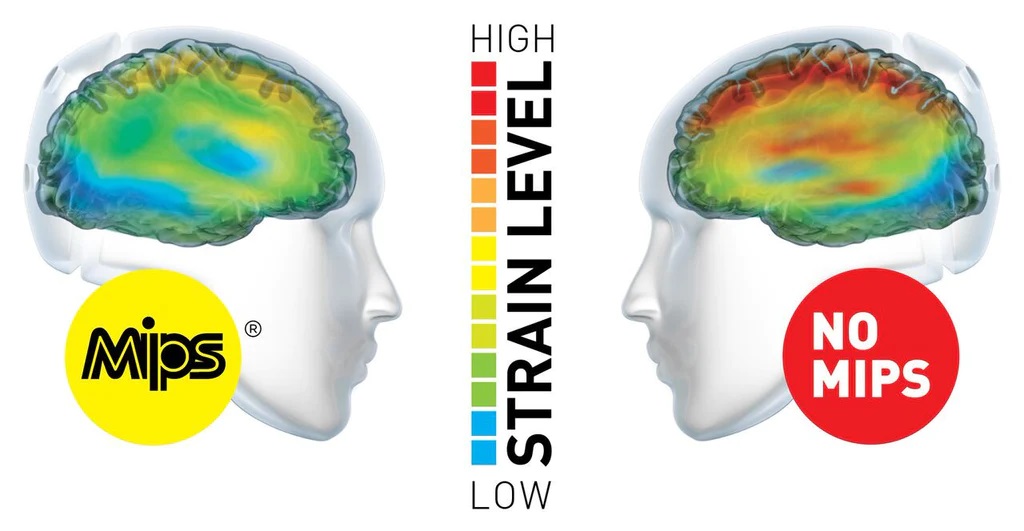

The mips brain protection system is a helmet-integrated, low-friction layer designed to reduce rotational motion transferred to the brain from angled impacts to the head. Mips works by installing a thin (0.5–0.7 mm), ventilated, custom cut low-friction layer inside the helmet liner. The layer is held in place by an assemblage of composite anchors that flex in all directions. These anchors hold the layer in place, around the head, but provide a small movement in response to angled impact. Mips’ small movement (10-15 mm) relative to the helmet at the brief moment of an angled impact (3–10 milliseconds) allows the head to continue in the direction in which it was originally travelling. This means that some portion of the rotational forces and energies acting on the head at impact are redirected and spread out thanks to the large low-friction layer, rather than being transferred to the brain.
Mips is designed to address what happens when you fall. Under real-world conditions, when you fall, your head usually hits the ground at an angle, putting your head into a spinning motion that could lead to strain in the brain. Accident statistics bear this out. However, in standard helmet tests, the helmet is dropped vertically onto a flat impact surface. This test is helpful for measuring precise vertical impacts, but far inferior for measuring the more realistic scenario of an angled impact.